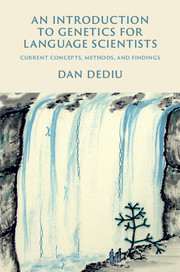Book contents
- Frontmatter
- Dedication
- Contents
- List of illustrations
- Acknowledgements
- 1 Introduction
- 2 Nature, nurture, and heritability
- 3 The molecular bases of genetics
- 4 Effects of genes on phenotype
- 5 Linkage disequilibrium and its role in finding genes
- 6 What do genes actually do?
- 7 The way forward: exome and genome sequencing
- 8 Population and evolutionary genetics
- 9 Interactions between genetic and cultural evolution
- 10 Conclusions, topics not covered, future directions
- Appendix The computer code
- References
- Index
- Glossary
7 - The way forward: exome and genome sequencing
Published online by Cambridge University Press: 05 April 2015
- Frontmatter
- Dedication
- Contents
- List of illustrations
- Acknowledgements
- 1 Introduction
- 2 Nature, nurture, and heritability
- 3 The molecular bases of genetics
- 4 Effects of genes on phenotype
- 5 Linkage disequilibrium and its role in finding genes
- 6 What do genes actually do?
- 7 The way forward: exome and genome sequencing
- 8 Population and evolutionary genetics
- 9 Interactions between genetic and cultural evolution
- 10 Conclusions, topics not covered, future directions
- Appendix The computer code
- References
- Index
- Glossary
Summary
This very short chapter introduces whole exome and genome sequencing, which will probably represent a large section of future studies. However, at present their potential has not yet been used for uncovering the genetic architecture of language and speech. We also touch here on a very important issue, namely the nature of the genetic architecture of complex traits such as language and speech: are these controlled by a few genes of large effect or many genes of small effect? And do we have a full account of the quantitative genetic estimates of heritability in terms of genetic loci?
Exome and genome sequencing
How about the new and hot developments in high-throughput sequencing (including the “next-generation” and “third-generation” methods) that promise to make sequencing thousands of whole genomes feasible in terms of time, infrastructure required and costs? At the time of writing there is only one published pioneering study using such methodologies to investigate the genetic architecture of language and speech (Worthey et al., 2013), but it is to be expected that in the near future they will provide a sizeable proportion of unexpected and exciting new discoveries (see also Deriziotis and Fisher, 2013).
In a nutshell, it is feasible to sequence somebody's whole genome (or just the protein-coding part of it covering only the exomes – the wholeexome) and, in principle, we could look at any characteristics of the person's genome/exome and her/his phenotype of interest. However, this soon runs against a possibly unexpected problem, namely that individual genomes harbour a lot of variation, some of it shared by a sizeable proportion of the population (representing the so-called polymorphisms, usually taken to be those variants appearing in more than 1% or 5% of the population, SNPs being one example), but also some appearing only in a very few other individuals (such as other family members), being thus rare, and yet others specific to the individual (de novo mutations).
- Type
- Chapter
- Information
- An Introduction to Genetics for Language ScientistsCurrent Concepts, Methods, and Findings, pp. 153 - 159Publisher: Cambridge University PressPrint publication year: 2015



